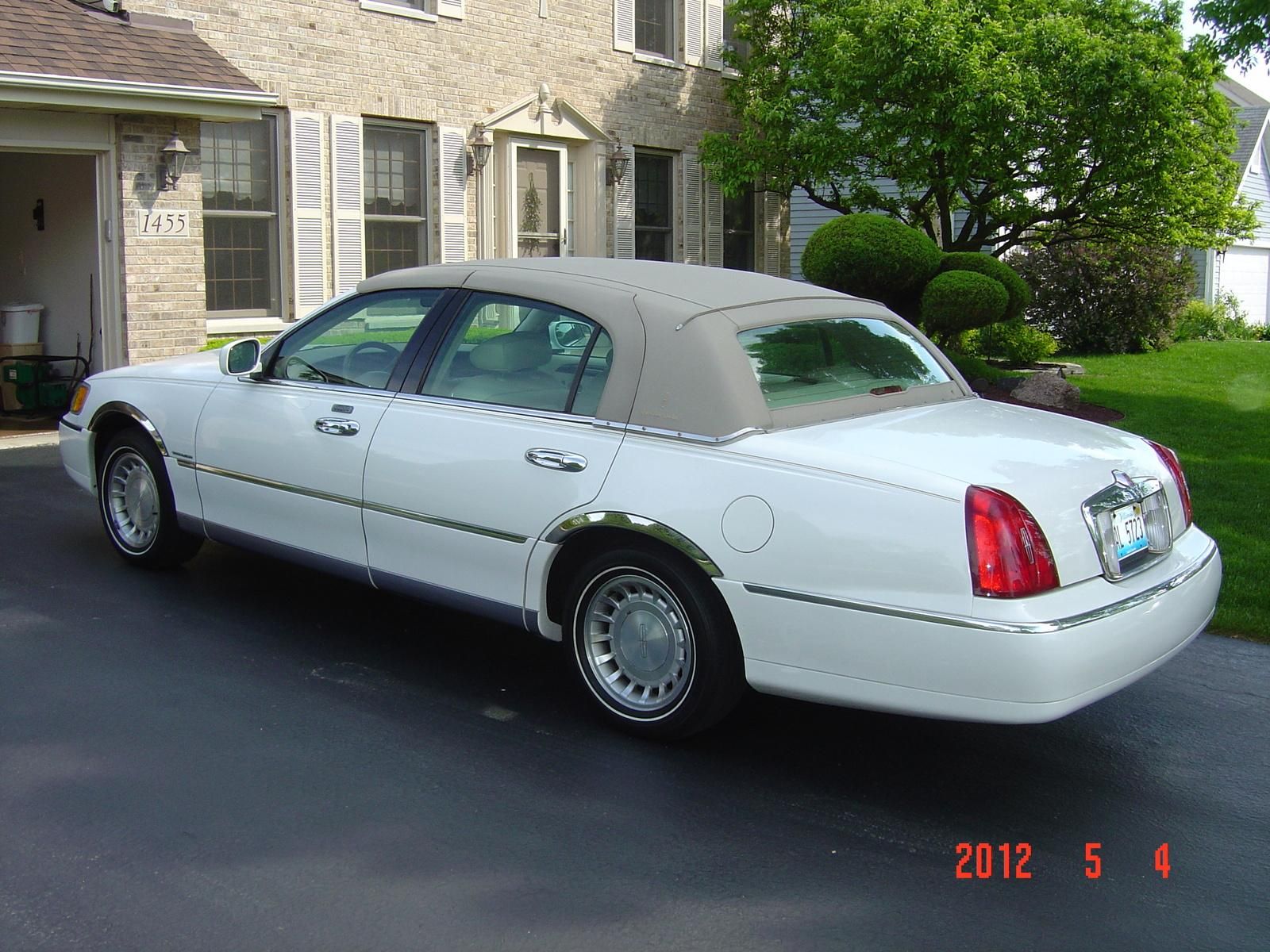

Steering effort is low at parking speeds and rises progressively as speed increases. The stiffer frame also helps handling, as does the new rack-and-pinion steering that replaces the older model's less precise recirculating ball steering gear.

And the new rails are filled with structural foam in key locations to help control dissipation of crash energy through the frame for better offset collision performance. The front frame rails now are fully boxed sections of hydroformed steel, which is lighter and stronger than the old frame's welded steel channels. The new Town Car is no sports sedan, but can be safely driven quite swiftly. There also are brake system upgrades and rear suspension refinements. Horsepower has been increased by 19 to 239 for livelier acceleration and there are a new frame, steering system and front suspension. At the rear, the fascia and taillamps have been redesigned for a cleaner look. The grille is flanked by quad-beam halogen headlights that are 60 percent brighter than the 2002 dual-beam design. There are subtly redesigned hood, fenders and quarter panels and a new chromed grille that stands more upright. So Lincoln decided to give the 2003 Town Car key mechanical improvements, besides a more "formal'' look. However, Cadillac and DaimlerChrysler might be returning to the market occupied by the Town Car. The Town Car could have remained competitive for a few more years in 2002 form, if only because its part of the market has few competitors and it has high customer satisfaction and loyalty. The 2002 Town Car had good handling for a car with a cloudlike ride, and its 4.6-liter overhead-camshaft V-8 and responsive automatic transmission teamed up to deliver lively acceleration. In fact, they have more rear seat leg room than any regular production car, however, the standard-length Town Car has plenty of rear-seat room. Most of that additional space is devoted to more rear-seat room, which puts the back seat of the L versions in the limousine class. It's hard to tell the regular new Lincoln models from the long-wheelbase ones because Lincoln disguises the extra half foot of length by using black molding along the front edge of the rear door glass to make the roof's center post look wider to allow a conventional appearance. The extra length of the 2003 Cartier L that I tested presented no maneuverability problems, but it barely fit in a long garage.

Rather the frame side rails are fabricated as a one-piece unit, and the roof, body sides and doors are unique stampings. The L models aren't "stretched'' versions of the standard cars. In contrast, the Cadillac De-Ville front-drive sedan is 207 inches long and the long-wheelbase versions of the largest new BMW and Mercedes-Benz rear-drive sedans are about 203 inches long. The Signature, Cartier and Executive versions of the Town Car are 215.4 inches long, while the long-wheelbase "L'' versions of the Cartier and Executive are 221.4 inches long. The Town Car is Lincoln's highest-selling model and remains the longest luxury auto sold in America. It has the same front-engine/rear-drive layout and some of the visual impact of those glamorous 1930s luxury models. The latest version recently went on sale as an early, strategically improved 2003 model. However, the Lincoln Town Car remains in that market. The 1930s Packard, Duesenberg and Pierce-Arrow are long gone, and General Motors and DaimlerChrysler no longer are in the V-8, rear-drive luxury sedan market. Few really big American luxury cars exist. Average wage earners were happy to own a Ford or Chevrolet. For instance, a 1936 Packard Twelve with a custom body by Fernandez & Darrin of Paris was simply stunning. Those cars really stood out, especially if they had custom bodies that could be readily ordered. Wealthy folks drove luxury cars such as Packards, Cadillacs and Lincolns in the 1930s, when such autos were exceptionally big, long and often breathtaking.


 0 kommentar(er)
0 kommentar(er)
